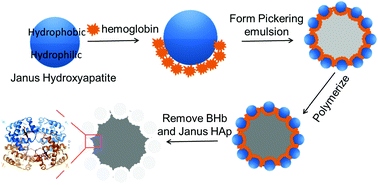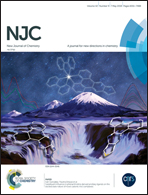Molecularly imprinted polymers fabricated using Janus particle-stabilized Pickering emulsions and charged monomer polymerization†
Abstract
In this study, we successfully synthesized bovine hemoglobin (BHb)-imprinted polymers based on the molecular imprinting technique and BHb-coated Janus hydroxyapatite nanoparticle (BCJHP)-stabilized Pickering emulsions. For the first time, Janus hydroxyapatite nanoparticles (J-HAp) were synthesized successfully by partial masking with ultrapure water and further coating with BHb and then, they were employed as Pickering-type interfacial stabilizers to prepare the Pickering emulsions. Moreover, the effect of electrostatic charge density on the recognition properties was explored in depth using 2,2-bis(hydroxymethyl)propionic acid as the cationic monomer and 2-acrylamide-2-methylpropanesulfonic acid as the anionic monomer. Rebinding experiments of BHb onto MIPs (molecularly imprinted polymers) and non-imprinted polymers (NIPs) in a PBS solution of BHb were studied using a batch method. The results indicated that charged monomers could be used to improve the adsorption capacity, but they decreased the selectivity. Thus, we could assume that by adjusting the monomer composition, the charged monomers could further modulate the rebinding capacity and specificity. In conclusion, as reusable materials possessing good selectivity and high rebinding capacity, the imprinted polymers are promising for applications in the field of protein separation and purification.



 Please wait while we load your content...
Please wait while we load your content...